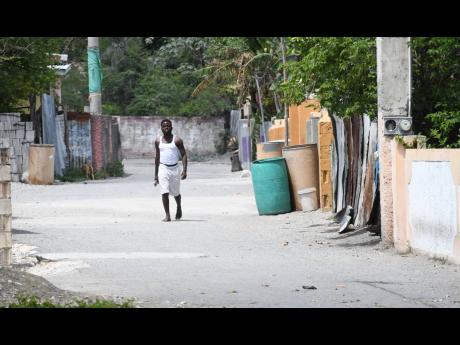Highway project strikes fear in the hearts of Grants Pen
The Southern Coastal Highway Improvement Project (SCHIP) is being touted as key to the economic development of St Thomas, but residents of Grants Pen fear it is likely to push their quite seaside community into oblivion.
The first phase of the SCHIP will rehabilitate approximately 110 kilometres of roadway between Harbour View in St Andrew and Port Antonio in Portland, and the 26-kilometre thoroughfare from Morant Bay to Cedar Valley in St Thomas.
Grants Pen, which is situated along the stretch leading from the Harbour View Bridge to the Yallahs Bridge, currently has an estimated 3,000 residents. Situated near the sea, several residents have been making a living from either fishing or selling seafood.
The Government has allotted $17.4 billion in the 2021-22 Estimates of Expenditures towards the implementation of the project, which is expected to be completed by March 2022. The construction of the highway will mean that residents might have to venture further to get access to public transportation, but even more worrying for those living in Grants Pen is the likelihood that consumer traffic will be rerouted.
“They say when the highway build, our community is going to become a back road, because the vehicles are going to travel on that side mostly,” said David Bowen, indicating to the hilly terrain in the distance.
Prior to COVID-19, the popular Sizzla Beach was abuzz with activity. Visitors would pass the jumble of zinc-and-board and concrete buildings at the front to venture inwards, where they would be greeted by blue sea.
“Over the years, we like keep some party and all them things there, and people would come in and support because we cook proper food here. When we catch the fish here, we roast it and grill, and all of that, and give people,” Bowen said.
ECONOMIC COLLAPSE
Bowen, who prepares meals for the fishermen on the beach before they go out to sea in the mornings, cannot imagine not having the continued support of patrons. But he fears the spectre of economic collapse.
“I live in this community for 49 years and I am used to vehicles passing to and from. When you look and you are not seeing that amount of vehicle passing you, you have to develop some things that will make people come to you same way,” he said.
Not wanting to become a forgotten community, the residents started a clean-up exercise on the beach in December. Last week, Bowen trucked sand to the location, and there are plans to build a bathroom. The aim is to make the venue look irresistible to those who chose to travel by the highway, and to woo them to visit and chill.
Bowen is lobbying for a community centre, especially because the children in the area do not have a suitable place to play. Currently, they gather at a central yard for games.
Recently, he made arrangements for them to have Internet access at a shed they built near the beach so that they can take part in online classes. There is need for a stronger shed and a kitchen area, but Bowen said they do not have the funds. He feels that with just $500,000,they could transform the space into a leisure spot.
Residents fear the highway will also cause more flooding woes. They expressed concerns about the draft design to take water from the highway through their community to the sea.
Khavel Dixon, a fisherman, believes the water should be channelled through an existing drain in the area which dumps water at sea.
In November last year, the community was affected by flood waters that damaged their homes and businesses.
“If you looked at the water, it come in like a river did come down; you wonder if it coulda stop,” recounted Dixon.
With the hurricane season six weeks away, they would like special attention to be placed on the two culverts that are currently being built by China Harbour Engineering Company Ltd to channel water from the highway. Dixon said the structure for the culverts is now being put in place.
“I would want that to be corrected before China Harbour leave up here so, because if a flood come now, you know what you are going to come here come see: whole heap of house going to full of debris that come down,” Dixon warned.
However, E.G. Hunter, chief executive officer of the National Works Agency, the state organisation which has oversight of the project, sought to assure that the plan for the southern thoroughfare was comprehensive.
“Adequate drainage has been incorporated in the entire road corridor from Harbour View to Port Antonio, and that at the end of the project, it will operate the way that it has been designed,” he said.



